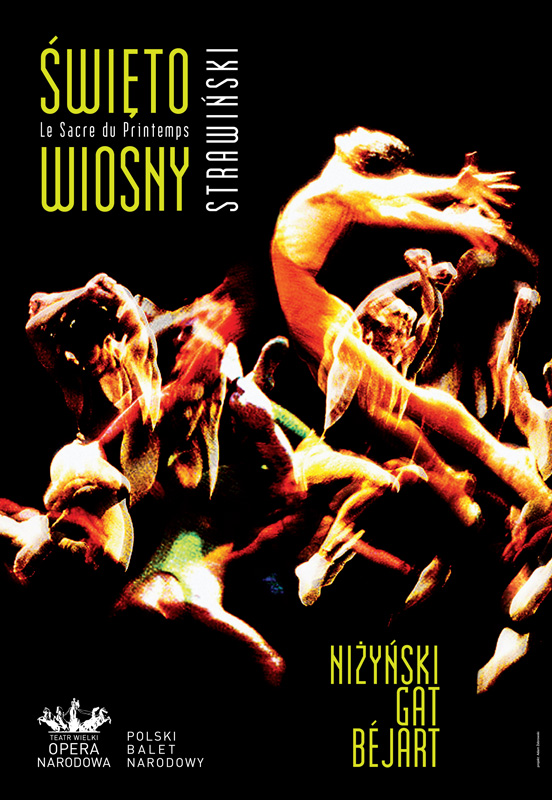
Ballet triple bill
Music: IGOR STRAVINSKY
Conductor: ŁUKASZ BOROWICZ
1. Sacre du printemps
Choreography: VASLAV NIJINSKY
Reconstruction and staging: MILLICENT HODSON
Scenery and costumes: NIKOLAI ROERICH / KENNETH ARCHER
Lighting: STANISŁAW ZIĘBA
2. Sacre du printemps
Choreography: EMANUEL GAT
Staging: MIA ALON, ROY ASSAF, MICHAEL LÖHR
Lighting and costumes: EMANUEL GAT
Technical supervisor: SAMSON MILCENT
3. Sacre du printemps
Choreography: MAURICE BÉJART
Staging: TONY FABRE, KYRA KHARKEVITCH, DOMENICO LEVRÉ
Scenery and costumes: PIERRE CAILLE
Lighting: DOMINIQUE ROMAN / STANISŁAW ZIĘBA
Polish premieres: 11 June 2011
A revolutionary piece of music by Igor Stravinsky, the ballet The Rite of Spring is presented here in three famous choreographic versions. The avant-garde music and choreography by the legendary Polish artist Vaslav Nijinsky, who debuted with the piece (Ballets Russes de Serge Diaghilev, 1913), were far ahead of their time and had a huge impact on the development of music and ballet in the 20th century. Many more renditions of The Rite of Spring followed, including the most famous one by Maurice Béjart (Ballet of the 20th Century, 1959), and new versions are still being devised today. The reconstruction of Vaslav Nijinsky's original choreography by the American artist Millicent Hodson in association with the British art historian Kenneth Archer in 1987 was also a major event, thanks to which the world could rediscover Nijinsky as the precursor of modern choreography. Krzysztof Pastor has decided to present at the Teatr Wielki a bill without precedence in the world, one that comprises three versions of Stravinsky's The Rite of Spring: by Vaslav Nijinsky, Maurice Béjart, and the contemporary Israeli-French choreographer Emanuel Gat (2004). This unique artistic project will be premiered by the Polish National Ballet on the eve of the 100th anniversary of the most famous ballet of the 20th century. [pch]
In 1913 The Rite of Spring was an announcement of a credo, vehelment and full of youthful impetus. By no mistake it was called the New Testament of music. For the contemporaries it was a shocking revelation, on ethat stunned with its glow. ... The scandalous fracas that erupted in the audience during the premiere of The Rite of Spring was caused not only by the music, which had brutally challenged the tastes of the epoch. Equally challenging was the subject-matter: pagan rites and beliefs shown in their full rawness and cruelty. They seemed too barbaric, too offensive to the audience's subtle tastes, shaped by the delicate allusions of impressionism and symbolism. ... Another challenge was the choreography ... with its rhythmic, angular movements, seemingly carved in stone, a heavy dance, with feet turned outwards, to be later popularised by African styles. But it was too early for the choreography to be appreciated. [Ludwik Erhardt, Balety Igora Strawińskiego]
Running time: ca. 2 hrs 30 min.




